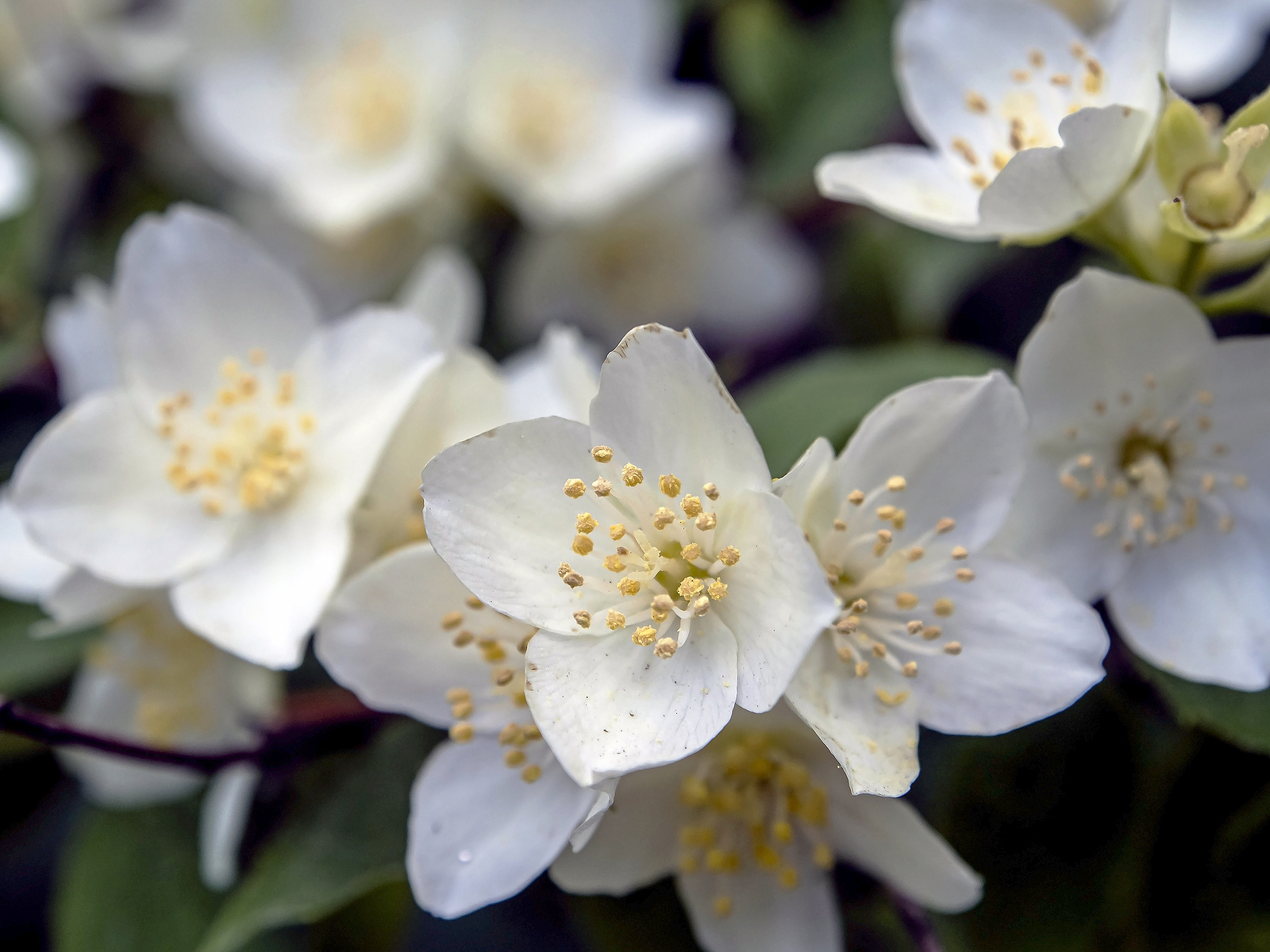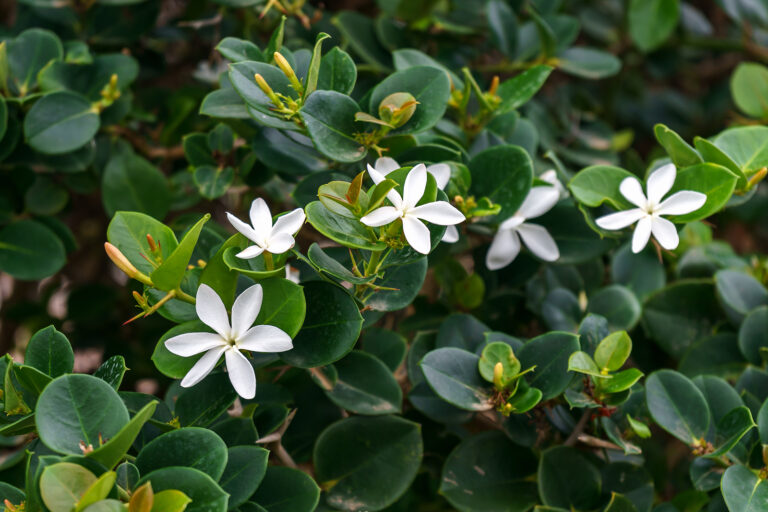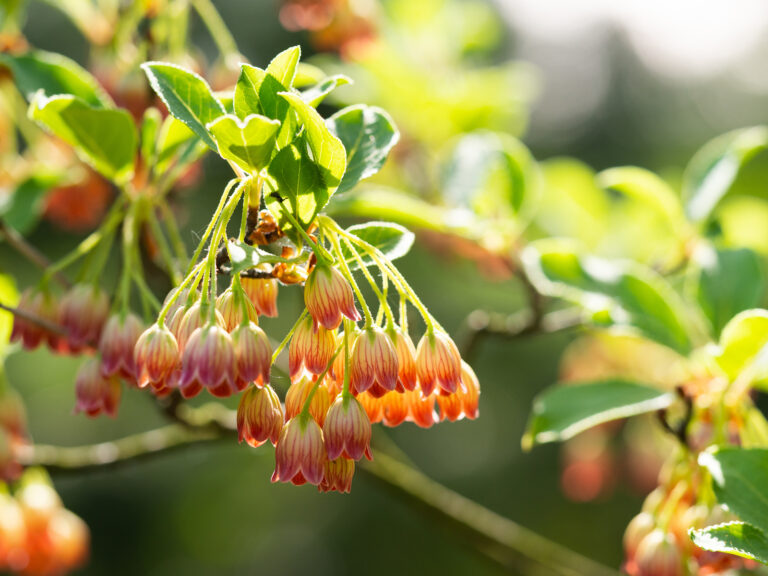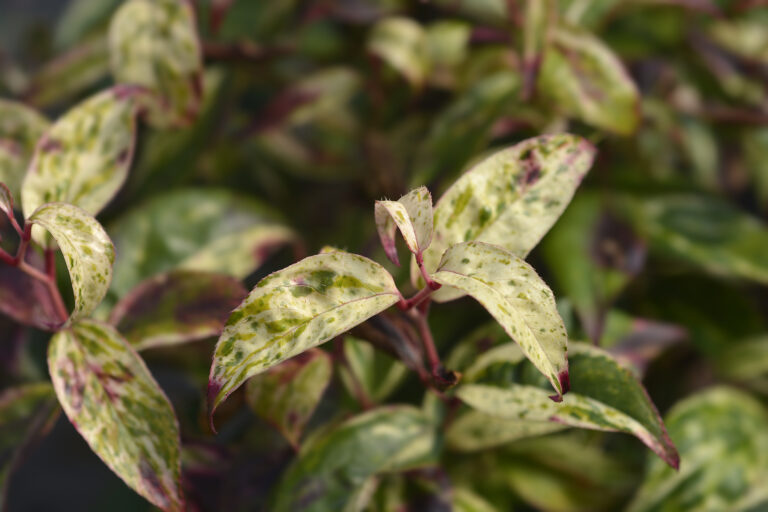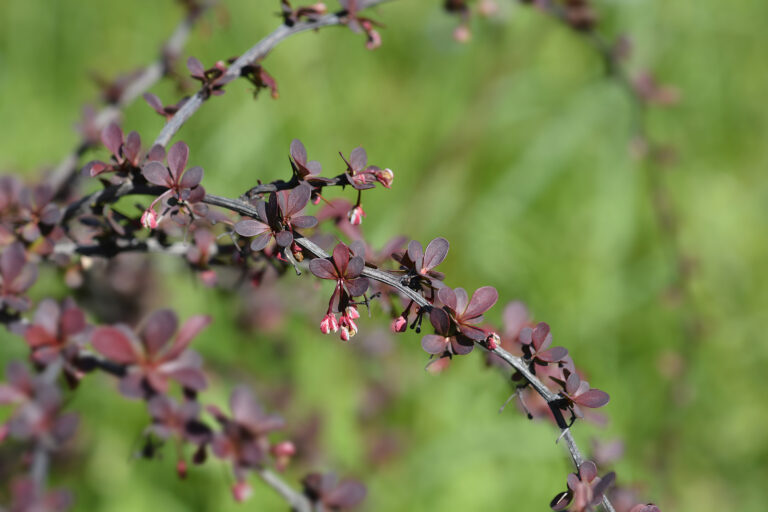How to Grow Philadelphus — Mock Orange
Philadelphus–commonly called Mock orange–produces clusters of small, very fragrant single or double white flowers in spring. The leaves are simple and mostly ovate and usually mid-green.
Philadelphus can be planted as a specimen or it can be used in a shrub border or woodland garden. Larger species can be used as screening.
Philadelphus is a genus of about 40 species of mainly deciduous shrubs. Philadelphus is native to scrub and rocky hillsides in North and Central America, Eastern Europe to the Himalayas, and East Asia.
Get to Know Philadelphus
- Plant type: Deciduous flowering shrub
- Growing Zones and range: 4-8
- Hardiness: Hardy
- Height and width: 3’- 12’ tall and wide
- Foliage: Medium green leaves are pinnate and opposite
- Flowers: Fragrant flowers reminiscent of orange blossoms
- Bloom time: Late spring
- Uses: Hedge, screen
- Common name: Mock orange
- Botanical name: Philadelphus spp.
- Family: Hydrangeaceae
- Origin: North and Central America, Eastern Europe to Himalayas, East Asia
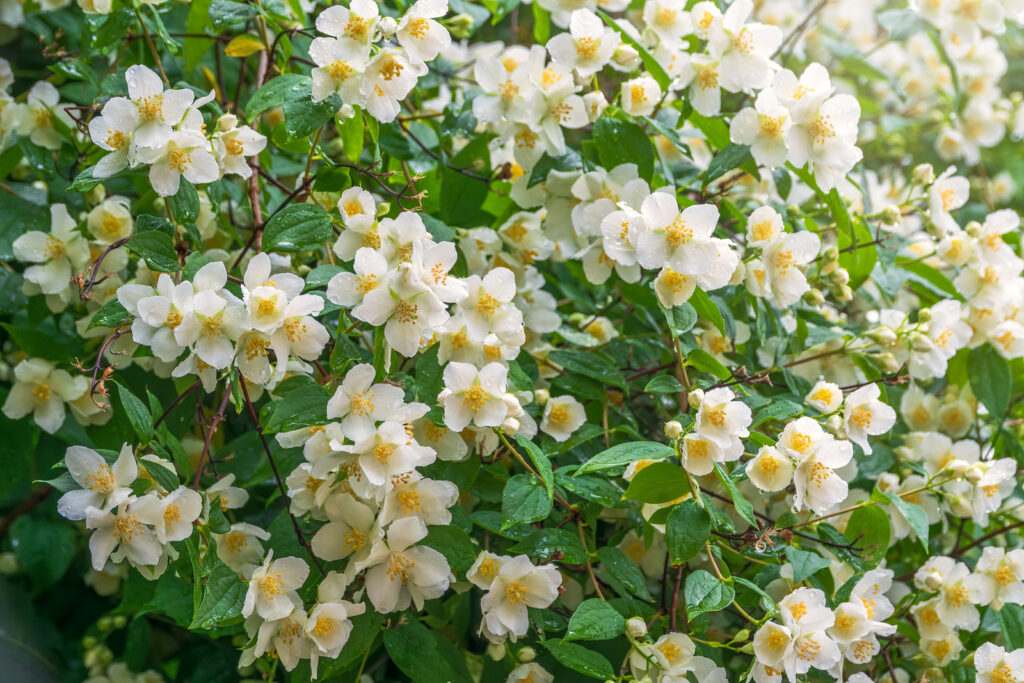
Where to Plant Philadelphus
- Plant Philadelphus in full sun to partial shade.
- Grow Philadelphus in humus-rich to poor, moist soil. Mock orange is tolerant of many soil conditions.
When to Plant Philadelphus
- Set Philadelphus in the garden in spring or fall.
Planting and Spacing Philadelphus
- Space Philadelphus 5 to 10 feet apart.
How to Water and Feed Philadelphus
- Philadelphus needs ample water; keep the soil evenly moist. Mature mock orange can tolerate drought.
- Philadelphus does not need feeding.
Philadelphus Care
- Mulch Philadelphus to conserve soil moisture.
- Prune Philadelphus regularly to avoid legginess. After flowering prune and remove branches at the base and cut back individual branches to shape. Cut mock orange back by one-third.
- Philadelphus is usually pest and disease-free.
Philadelphus Propagation
- Take cuttings in summer.
- Remove and replant rooted stems in spring or fall.
Philadelphus Varieties to Grow
- ‘Belle Etoile’ bears single flowers; ‘Avalanche’ grows to 3 feet tall; ‘Boule d’ Argent’ has double flowers; Minnesota Snowflake’ has double flowers’ ‘Virginal’ bears double flowers.
- Sweet mock orange (Philadelphus coronaries) grows 10 to 12 feet tall in Zones 4-7.
- Philadelphus x virginalis is hardy in Zones 5-8.

